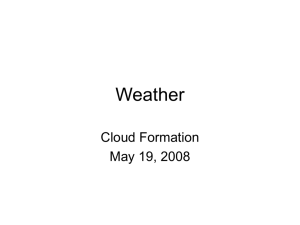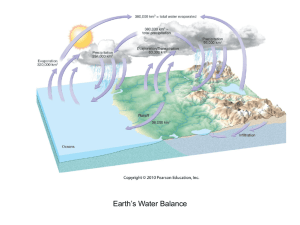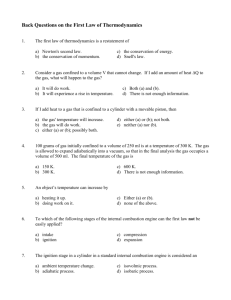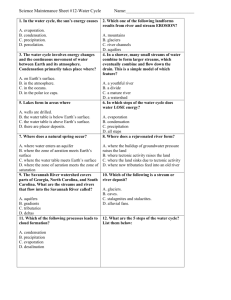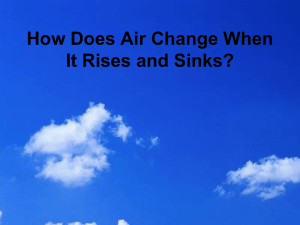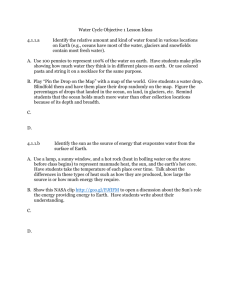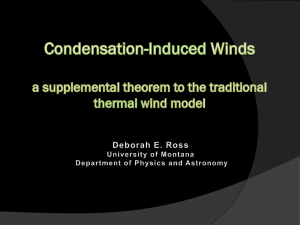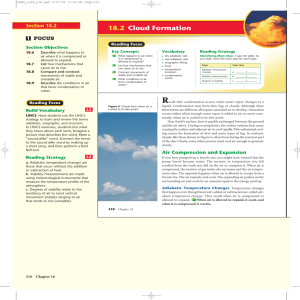Section 18.2 Cloud Formation
advertisement
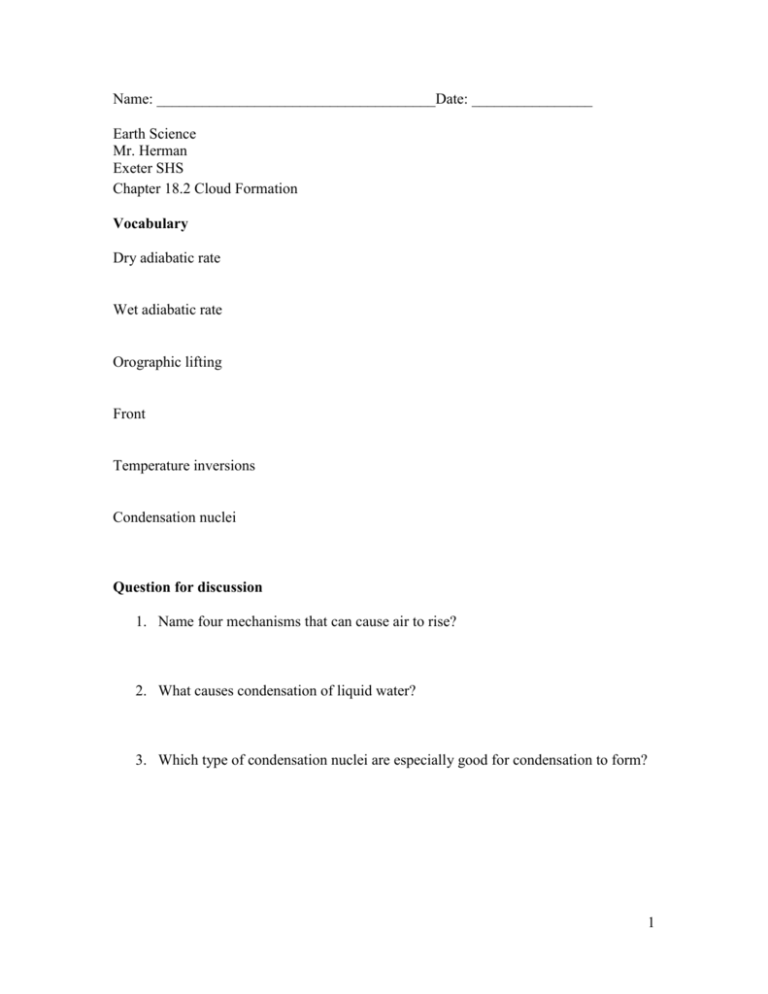
Name: _____________________________________Date: ________________ Earth Science Mr. Herman Exeter SHS Chapter 18.2 Cloud Formation Vocabulary Dry adiabatic rate Wet adiabatic rate Orographic lifting Front Temperature inversions Condensation nuclei Question for discussion 1. Name four mechanisms that can cause air to rise? 2. What causes condensation of liquid water? 3. Which type of condensation nuclei are especially good for condensation to form? 1 Objective Describe what happens to air when it is compressed or allowed to expand List four mechanisms that can cause air to rise Compare and contrast movements of stable and unstable air Describe the conditions in air that favor condensation of water Air Compression and Expansion Adiabatic Temperature Changes When air is allowed to expand, it cools, and when it is compressed, it warms. Expansion and Cooling Dry adiabatic rate is the rate of cooling or heating that applies only to unsaturated air. Wet adiabatic rate is the rate of adiabatic temperature change in saturated air. Cloud formation by Adiabatic Cooling Processes That Lift Air Four mechanisms that can cause air to rise are orographic lifting, frontal wedging, convergence, and localized convective lifting. Orographic Lifting Orographic lifting occurs when mountains act as barriers to the flow of air, forcing the air to ascend. The air cools adiabatically; clouds and precipitation may result. 2 Frontal Wedging A front is the boundary between two adjoining air masses having contrasting characteristics. Convergence Convergence is when air flows together and rises. Localized Convective Lifting Localized convective lifting occurs where unequal surface heating causes pockets of air to rise because of their buoyancy. Stability Density Differences Stable air tends to remain in its original position, while unstable air tends to rise. Stability Measurements Air stability is determined by measuring the temperature of the atmosphere at various heights. The rate of change of air temperature with height is called the environmental lapse rate. Degrees of Stability A temperature inversion occurs in a layer of limited depth in the atmosphere where the temperature increases rather than decreases with height. 3 Stability and Daily Weather When stable air is forced above the Earth’s surface, the clouds that form are widespread and have little vertical thickness compared to their horizontal dimension. Condensation For any form of condensation to occur, the air must be saturated. Types of Surfaces Generally, there must be a surface for water vapor to condense on. Condensation nuclei are tiny bits of particulate matter that serve as surfaces on which water vapor condenses when condensation occurs in the air. 4
